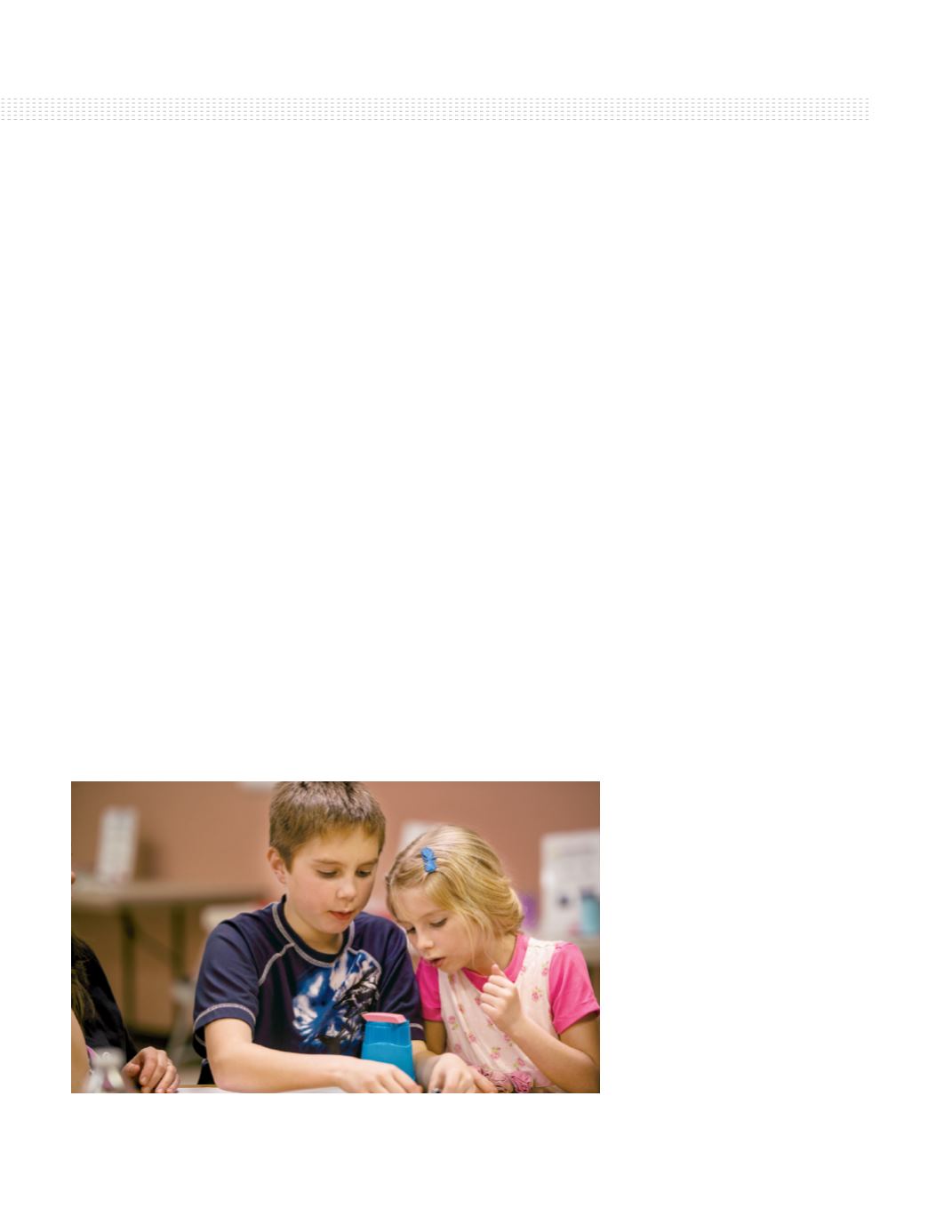

Summer 2016
19
●
●
Using positive behavioral interven-
tions to support rather than punish
students decreases the need for
disciplinary actions and enhances
student engagement. Follow-
ing that model, teachers seek the
reasons behind behavioral issues
and offer assistance instead of
imposing punishment. Peterson
reported that the implementation
of positive behavioral intervention
systems (PBIS) at Wa-Hi has reduced
the suspension and expulsion rates
and has resulted in fewer cases of
disciplinary actions.
Build positive relationships
with students
●
●
Teachers and staff need to facilitate
communication and build relation-
ships with students to better engage
them in learning. Staff at College
Place High School are able to know
all students because the student
population is relatively small; a com-
mitment to knowing all students will
be important as the school grows.
At Wa-Hi, the Link Crew alert system
provides rapid support for students
whom peers or staff identify as need-
ing immediate help.
●
●
Students need positive relationships
with adults who care about them.
Mentors can inspire youth to realize
their full potential and help them
understand what it takes to be suc-
cessful. Positive relationships with
caring adults make a huge differ-
ence in the lives of struggling youth.
Kaiser noted that adult mentorship
presents a unique challenge in
Milton-Freewater, where over half of
the student population is Hispanic
and the vast majority of teachers and
staff are white. In that environment,
Hispanic students rarely have oppor-
tunities to interact with adults who
share their cultural heritage.
●
●
Students need role models—people
they can identify with and look up to.
Wa-Hi’s Link Crew program connects
each freshman with an upper-class
mentor.
●
●
Dual-language education affirms
positive self-identity, which en-
hances engagement. When student
identity is positively affirmed, espe-
cially by teachers, students are more
likely to be engaged because they
feel validated. By contrast, failing to
affirm linguistic and cultural identi-
ties makes those students feel invis-
ible and suggests their academic
efforts do not count. Students whose
identities are negated may act out,
resist authority and disengage,
which can start a cycle of failure.
Cultivate student interest
●
●
Several speakers suggested that stu-
dents are more likely to be engaged
when they are involved in project-
based learning. While project-based
learning can be used in any curricu-
lum, speakers noted that it is often
used in CTE and STEM.
●
●
According to the National Associa-
Create safe spaces for learning
●
●
Griffin suggested that people need
to feel that they are in a physically
and socially safe environment in
order to become engaged and able
to learn. When people feel physically
safe, they will not be distracted by
fears of physical harm. When they
feel socially safe, they can participate
without worrying about being de-
valued. Understanding the impor-
tance of a safe environment in that
way shifts the meaning of access
away from notions of open admit-
tance toward a concept of active
inclusion.
●
●
Several speakers highlighted the
importance of developing trauma-
informed methods to address the
impacts of adverse childhood expe-
riences (ACES). ACES, such as abuse,
neglect, and household dysfunction,
trigger fight-or-flight responses
that limit an individual’s ability to
engage and make it difficult to learn.
Training all teachers and staff in
trauma-informed learning can help
create a nurturing environment that
supports all learners.
Students and design challenge. Photo courtesy of Pacific Northwest
National Laboratory.
















